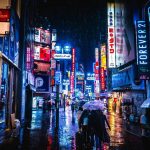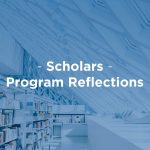In Toronto, Arts and Culture Take Center Stage
This is a guest post by Ellyn Parker, project manager for the 2018 Rose Fellowship team. This is the second blog in a three-part series about insights from a study tour of Toronto by NLC’s 2018 Rose Center Land Use Fellows.
Last month, NLC’s Rose Center Land Use fellowship team braved the cold temperatures of a polar blast to take in the breathtaking beauty of the city of Toronto, Ontario and learn from our peers and an extraordinary group of hosts that took time to show us around their vibrant city.
The integration of infrastructure that focused on long-term sustainability in both the built and social environments was impressive and inspiring. While fellows from Richmond all brought a different lens from their respective areas of expertise, I can speak for all of us in saying that the innovative coordination of different agencies and private partnerships to solve tough challenges was something we took to heart and will bring back to our city.
From a built environment standpoint, we saw firsthand the tactic of using natural resources to provide energy in the downtown district. For example, the Enwave project provides district heating and cooling within the intensely developed core of Toronto. The project features deep lake cooling technology, which circulates cold water from Lake Ontario through heat exchangers to provide cooling for buildings in the city. This effort from the greater Toronto region capitalized on the resources that were available to provide long-term plans for an ecologically smart solution to heating and cooling.
The Enwave project was a public-private partnership that exemplifies the need to responsibly keep up with energy demand in a rapidly growing downtown area that sits on Lake Ontario. This lesson is particularly relevant to our Rose Center Land Use Fellowship study area in Richmond, which has a flood zone that sits in the midst of a significant historical district. We are trying to balance the need for development, historic preservation and sustainable solutions to keep our investments safe while protecting our treasured James River from pollutants and runoff. This was a notable example of innovative sustainable practice that we will look to as a model.
From a social environment lens, the integration of the arts into many of the transformative projects was as astounding as the results were visible. Incredible public art is embedded into the city’s landscape, thanks to the city’s investment and the so-called “percent for arts” legislation mandating that new development include public art as part of their projects. Also noteworthy is the renovation of the Distillery District that harnesses the local artistic and creative community into a bustling Christmas market annually, and an explosion of galleries and small arts businesses that have an outsized economic impact.
For me personally, as the lone arts person in the group of fellows, the Regent Park development was the perfect catalytic project to showcase how arts and culture, when embedded into the social infrastructure of a city, can really create dramatic results. Toronto Community Housing’s approach to creating a thriving mixed-income and mixed-use community put arts at the heart of an immense investment into Toronto’s social (what we in the states call “public”) housing.
The Daniels Spectrum is a 60,000-square foot cultural and community center that ties together the 69-acre housing site. Owned by the Regent Park Arts Non-Profit Development Corporation — a non-profit joint venture between subsidiary corporations of Toronto Community Housing, private development partner The Daniels Corporation and Artscape (a not-for-profit urban development organization that makes space for creativity and transforms communities) — this investment into the creative sector has created a platform for community conversations, a gathering place, a social innovation center and a space that is both a resource for community members and a destination for visitors.
As a tireless advocate for embedding the arts into all aspects of our society, the Daniels Spectrum was a beautiful example of how to see the arts not just an extraneous part of development, but as the centerpiece of a project, that can create profound positive community connection.



